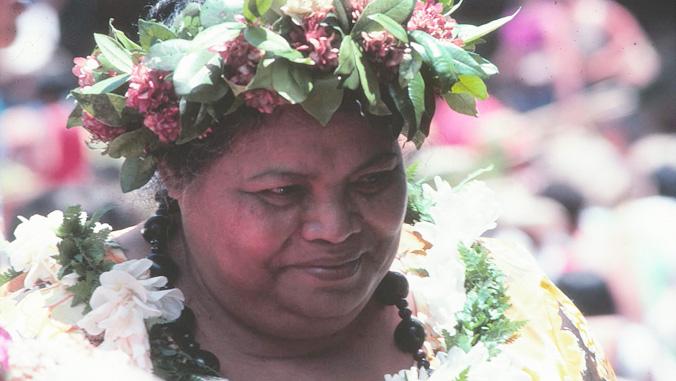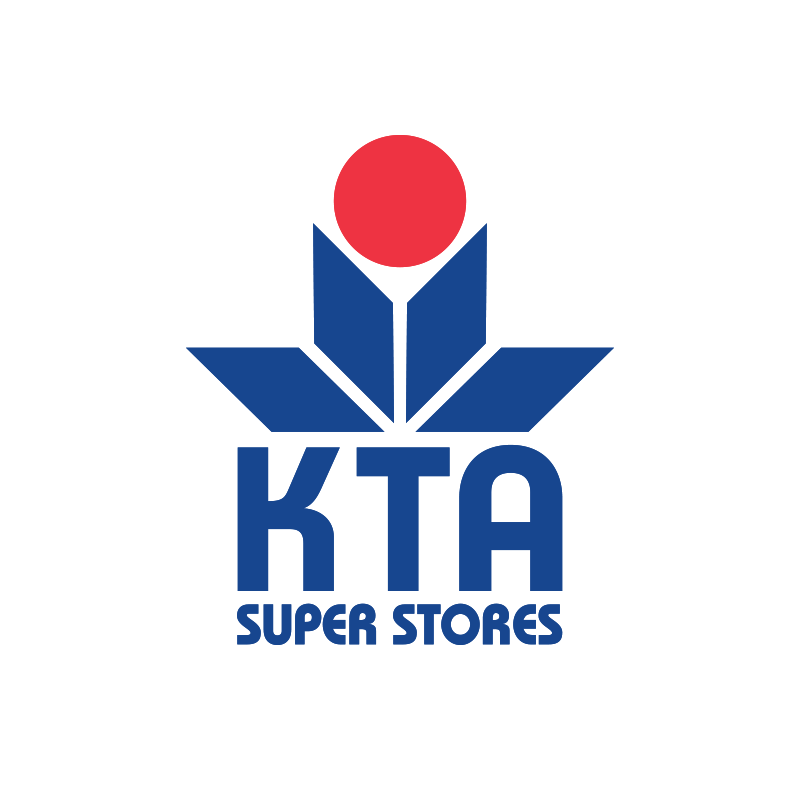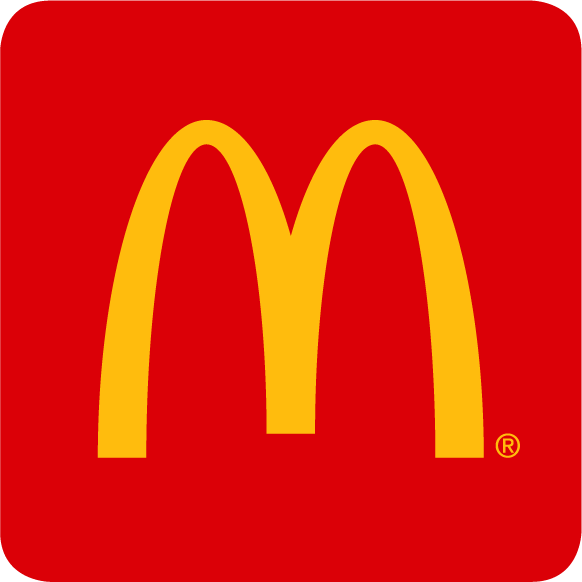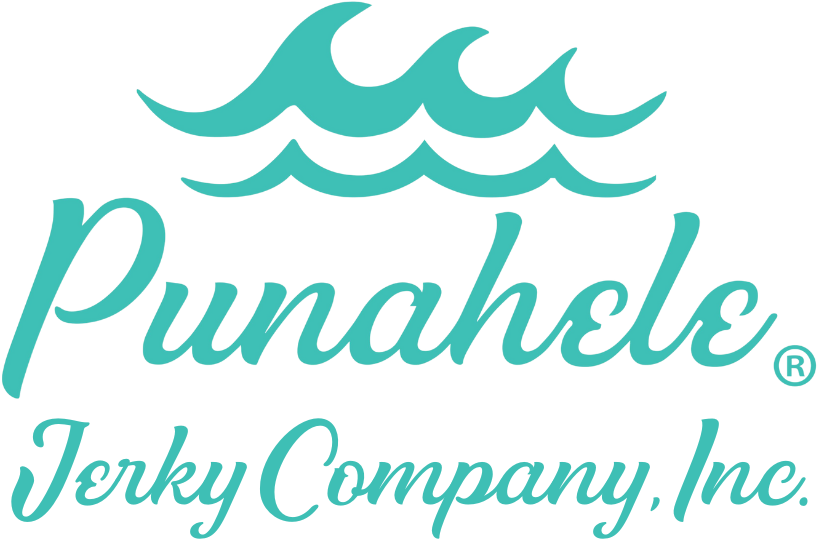What you need to know about the 60th Annual Merrie Monarch Festival
The stage is set. All the tickets are sold. The banners are up throughout Downtown Hilo. Hālau hula have been on the Big Island, practicing at the Edith Kanaka‘ole Multi-Purpose Stadium for several weeks. Last-minute preparations are being made.
Get ready, world. The Merrie Monarch Festival returns with full regalia for the first time since 2019.
The 60th Annual Merrie Monarch Festival runs Easter Sunday, April 9, through April 15. Hula will be in the spotlight not just during the competition portion of the festival but also during the Hōʻike and at other venues around town throughout the week. The official Merrie Monarch Hawaiian Arts and Crafts Fair and the Merrie Monarch Festival Royal Parade also return.
Here’s everything you need to know — and more — about this year’s festival.
Where is the festival?
- The Merrie Monarch Festival is held in a couple of venues at the Ho‘olulu Complex in Hilo, a 56-acre park and recreation center managed by Hawai‘i County just off Mamo Street, east of Wailoa River State Recreation Area.
- The Merrie Monarch Arts and Crafts Fair takes place at the Afook-Chinen Civic Auditorium and Butler Buildings.
- The Merrie Monarch Hōʻike and hula competition are conducted at the Edith Kanaka‘ole Multi-Purpose Stadium.
- The Merrie Monarch Festival office is also located on the complex grounds, next to the stadium.
Will there be a Hoʻolauleʻa (celebration) this year?
Yes. According to the official Merrie Monarch Festival website, the Hoʻolauleʻa will begin at 9 a.m. Sunday, April 9, and will be hosted at the Afook-Chinen Civic Auditorium. The celebration will feature performance by local hālau and more. Admission is free.
When is the Hōʻike?
The popular night of non-competitive hula performances begins at 6 p.m. on April 12.
What days are the internationally acclaimed hula competitions?
The Super Bowl of Hula kicks off April 13 with the Miss Aloha Hula competition at 6 p.m. The individual contest includes hula kahiko, hula ‘auana and oli, or chant.
The group competitions begin with hula kahiko at 6 p.m. on April 14, followed by hula ‘auana at 6 p.m. on April 15. At the conclusion, there will be an awards presentation for all group winners.
This year’s competition features 12 Miss Aloha Hula candidates and 23 participating hālau hula — three from the Big Island, 14 from Oʻahu, four from Maui and one each from Kaua‘i and Washington State.
Where can you watch if you didn’t get tickets?
Hawai‘i News Now – KFVE, the festival’s official broadcaster, will carry the events live on-air and online each night, as well as include special coverage during newscasts and on streaming platforms and social media. Click here for more. You can also follow the festival on Facebook and Instagram or visit the official website for additional information.

Who are this year’s Miss Aloha Hula contestants and their kumu?
- Meleana Kamalani Mirafuentes: Nā Kumu Hula William Kahakuleilehua Haunuʻu “Sonny” Ching and Lōpaka Igarta-De Vera.
- Eva Rose Keaoʻōpuaikalaʻi Espinoza: Kumu Hula Keolalaulani Dalire.
- Jazmine Nohealani Adams-Clarke: Kumu Hula Kapua Dalire-Moe.
- Pōhaikealoha Olikolani Artates: Kumu Hula Nāpua Greig.
- Breeze Ann Kalehuaonālani Vidinha Pavao: Kumu Hula Leināʻala Pavao Jardin.
- Tehani Kaleohoneonālani Barrett: Nā Kumu Hula Kasie Puahala Kaleohano and Brandi Nohelani Barrett.
- Je’ani-Jade Kalamaolaikapohakea Pavao: Nā Kumu Hula Kunewa Mook and Kau‘ionālani Kamana‘o.
- Jill-Lyan Makanaokalani Mae-Ling Mamizuka: Kumu Hula Kamaka Kukona.
- Agnes Renee Leihiwahiwaikapolionāmakua Thronas Brown: Nā Kumu Hula Tracie and Keawe Lopes.
- Karlee Pōhaikealoha Rita Chong Kee: Nā Kumu Hula Haunani and ‘Iliahi Paredes.
- Tayla-Nohealeimamo Kamaehukauikapono Taʻuhere Vaughan-Darval: Kumu Hula Kaʻilihiwa Vaughan-Darval.
- Pōlaʻa Kalaniʻelima Yim: Kumu Hula Kenneth Dean Alohapumehanaokalā Victor.
Who are this year’s participating hālau hula and their kumu?
- Hālau Lilia Makanoe: Kumu Hula Shelsea Lilia Ai.
- Hālau Nā Mamo O Pu‘uanahulu: Nā Kumu Hula William Kahakuleilehua Haunu‘u “Sonny” Ching and Lōpaka Igarta-De Vera.
- Keolalaulani Hālau ‘Ōlapa O Laka: Kumu Hula Keolalaulani Dalire.
- Hālau Ka Liko Pua O Kalaniākea: Kumu Hula Kapua Dalire-Moe.
- Hālau Mōhala ‘Ilima: Kumu Hula Māpuana De Silva.
- Hālau Keolakapuokalani: Kumu Hula Drake Keolakapu Dudoit Delaforcé.
- Hālau Kiawekūpono O Ka Ua: Kumu Hula Ulukoa Duhaylonsod.
- Hālau Hula ‘O Kahikilaulani: Kumu Hula Nāhōkūokalani Gaspang.
- Hālau Nā Lei Kaumaka O Uka: Kumu Hula Nāpua Greig.
- Hālau Hula Kauluokalā: Kumu Hula Uluwehi Guerrero.
- Keʻala ʻO Kamailelauliʻiliʻi: Kumu Hula Kamaile Hamada.
- Hālau Ka Lei Mokihana O Leināʻala: Kumu Hula Leinā‘ala Pavao Jardin.
- Hālau Ka Lehua Pua Kamaʻehu: Nā Kumu Hula Kasie Puahala Kaleohano and Brandi Nohelani Barrett.
- Hula Hālau ‘O Kamuela: Nā Kumu Hula Kau‘ionālani Kamana‘o and Kunewa Mook.
- Hālau Hiʻiakaināmakalehua: Nā Kumu Hula Robert Ke‘ano Ka‘upu IV and Lono Padilla.
- Hālau O Ka Hanu Lehua: Kumu Hula Carlson Kamaka Kukona III.
- Ka Lā ʻŌnohi Mai O Haʻehaʻe: Nā Kumu Hula Tracie and Keawe Lopes.
- Hālau Kekuaokalāʻauʻalaʻiliahi: Nā Kumu Hula Haunani and ʻIliahi Paredes.
- Kawaiʻulaokalā: Kumu Hula Keliʻihoʻomalu Puchalski.
- Hālau Hula O Kauhionāmauna: Kumu Hula Theresa Kauhionāmauna Ramento Tehiva.
- Ka Leo O Laka I Ka Hikina O Ka Lā: Kumu Hula Kaleo Trinidad.
- Hālau Hula Ka Lehua Tuahine: Kumu Hula Ka‘ilihiwa Vaughan-Darval.
- Hālau Kalaʻakeakauikawēkiu: Kumu Hula Kenneth Dean Alohapumehanaokala Victor.

Who are this year’s judges?
The judges are: Cy Bridges, Ed Collier, Vicky Holt Takamine, Nālani Kanaka‘ole, Noenoelani Zuttermeister Lewis, Pi‘ilani Lua and Kalena Silva.
What is hula kahiko?
This is the traditional form of hula. It is accompanied by oli, or chant, and does not use modern instruments such as the ‘ukulele or guitar. Instead, traditional percussion instruments such as rhythm sticks, gourds carved into drums and rattles and bamboo sticks are used. According to The House of Kamakahelei, kahiko was generally performed before 1894.
What is hula ‘auana?
This style of hula is more modern and less formal than hula kahiko. “‘Auana” means to wander or drift, and this style has drifted away from the traditional hula kahiko. It is more interactive with the audience, taking influence from Western culture, and typically accompanied by song and a variety of instruments such as the guitar, steel guitar, bass and ‘ukulele. Hula ‘auana is more commonly used in movies and other Western media than its traditional counterpart.
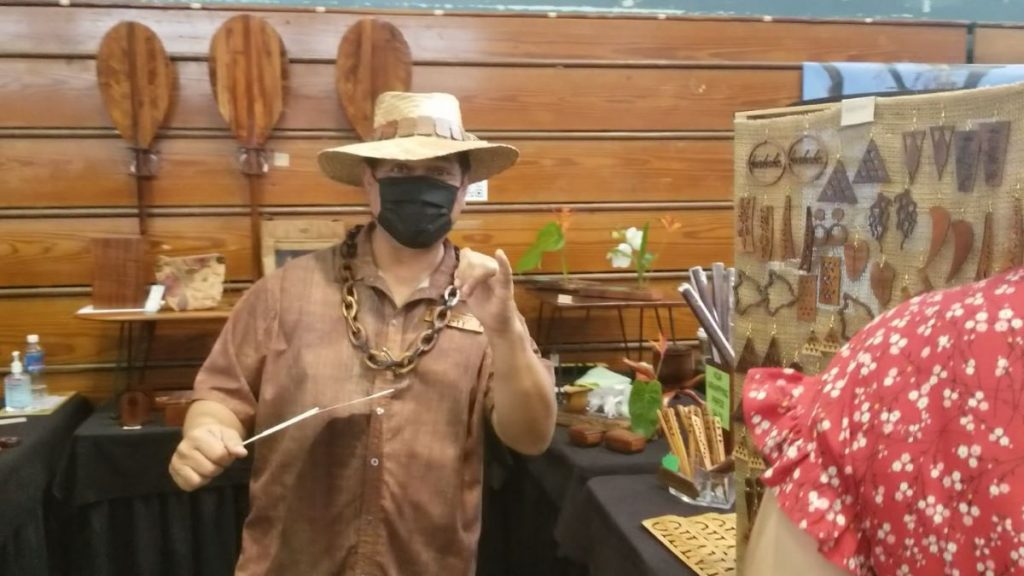
When is the Merrie Monarch Hawaiian Arts and Crafts Fair?
The official Merrie Monarch Festival Arts & Crafts Fair at Afook-Chinen Civic Auditorium returns this year from 9 a.m. to 5 p.m. on April 12-14, and 9 a.m. to 4 p.m. on April 15. The fair showcases and supports Hawai’i artisans and creators, featuring more than 150 of the state’s best. Admission is free and official festival apparel, posters and programs will be available for purchase.
Where can you get official Merrie Monarch wear?
Official Merrie Monarch wear will be available for purchase during the official arts and crafts festival. You can also find official merchandise at Prince Kuhio Plaza’s Merrie Monarch Craft Fair and during the festival’s opening Hoʻolauleʻa, as well.
Official apparel is also available at the festival office at 865 Pi‘ilani St. in Hilo during regular business hours from 8:30 a.m. to 2 p.m. Monday through Friday.
The design for this year’s shirts and hoodies was created by Lee Mori with Creative Arts Hawai’i.
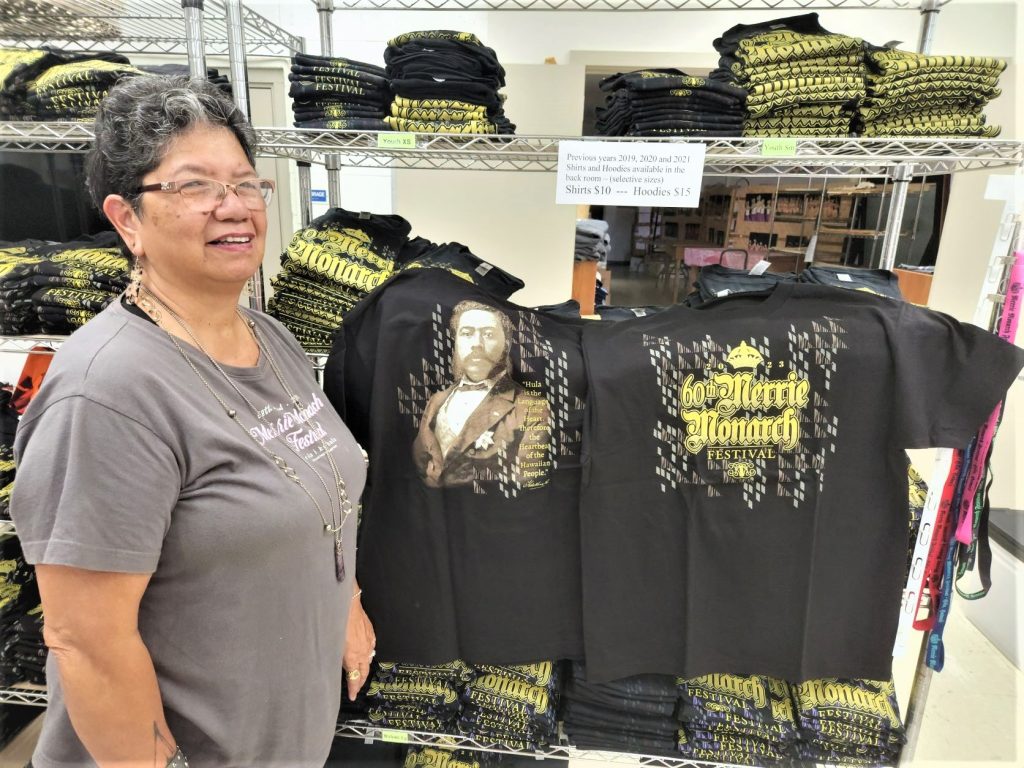
Are there any special traffic considerations during the festival?
A temporary one-way traffic pattern will be in place on Kalanikoa Street in Hilo. The one-way pattern will be in effect 24 hours a day beginning at noon on April 12, and remain in place through 8 a.m. on April 16. Traffic will be allowed to flow in the northerly direction between Pi‘ilani Street and Kuawa Street.
Motorists traveling in a westerly direction on Pi‘ilani Street will be allowed to turn right onto Kalanikoa Street. Left turns will also be allowed onto Kalanikoa Street from Pi‘ilani Street.
Both right and left turns will be allowed to one-way traffic on Kalanikoa Street to access the Ho‘olulu Complex, the home of Edith Kanaka‘ole Multi-Purpose Stadium, and businesses in the area.
Regular two-way traffic will remain in effect on Manono, Pi‘ilani and Kuawa Streets.
When is the Merrie Monarch Festival Royal Parade?
This year’s parade is set for 10:30 a.m. on April 15, and will celebrate the resiliency of the community and Hawaiian culture. The event will feature floats and tons of flowers along with pāʻū riders and others parading throughout Downtown Hilo.
Parking space closures will be in effect from 7 a.m. to 3 p.m. on both sides of Kīlauea Avenue and Keawe Street between Ponahawai Street and Waianuenue Avenue. All marked parking spaces on both sides of Waianuenue Avenue between Keawe Street and Kamehameha Avenue will also be closed. All marked parking spaces reserved for persons with disabilities will remain accessible.
The stalls are being closed to ensure the safety of parade spectators and participants. The 2-mile parade route closes to traffic at 10 a.m. Roads will reopen at 3 p.m.
What are the “instruments of hula”?
There are several musical instruments commonly seen and used on the Merrie Monarch stage, including:
- Pahu, a traditional tall and narrow Hawaiian drum carved from wood that is used to provide rhythm.
- Ipu, a percussion instrument made from a single gourd or two large gourds of unequal sizes joined together, called an ipu heke, which is hit with a hand or tapped on the ground to create a beat.
- ‘Uli ‘uli, which are gourds filled with pebbles, shells or seeds that rattle and are adorned with feathers.
- ‘Ili ‘ili, which are smooth stones that can be struck together like castanets for a more staccato rhythm.
- Pu‘ili are dried strips of bamboo that make a distinctive rattling sound when hit. They are used in pairs, with dancers tapping them against each other.
Why are the movements in hula so important?
No matter the style, hula shares the stories that connect people, including the dancers, to the foundation of Hawaiian knowledge and culture. It is a vehicle for historical and social commentary and passing down stories and information.
“Every movement, expression and gesture in the hula has a specific meaning, from representing plants, animals and the elements to listening, searching, sailing and so much more,” according to Honolulu tour company Go Tours Hawai‘i, which adds that hand movements are of particular significance.
Hand movements are used to represent the words in a song or chant. They can represent an emotion like yearning or signify nature, such as a tree swaying in the wind or an ocean wave.
What are common hula adornments?
- Pāʻū is a dance skirt worn by both men and women hula dancers. Made of kapa, or bark cloth, and elaborately decorated with stamped or painted patterns in ancient times, nowadays most dancers make them from woven cloth and dye, paint or silkscreen patterns onto them. They can be made with ti leaves; ‘ilihau, the processed bark of the hau tree; lauhala, the dried leaves of the hala tree; and even cellophane.
- Malo is a men’s loincloth. While malo have become popular again, for modern hula, men also wear trousers, sometimes with a ti leaf, lauhala or ‘ilihau skirt over them. They can choose to wear shirts, but it is not obligatory.
- Lei, the familiar garland of flowers, leaves, shells, ivory or feathers, are worn by men and woman around the neck or head and sometimes a hat.
- Kupe‘e are similar to lei but instead decorate wrists or ankles, drawing attention to the delicate movements of hands and feet.
Who was King Kalākaua and why is the Merrie Monarch Festival dedicated to his memory?
King David La‘amea Kalākaua, known as the “Merrie Monarch” for his flamboyant and fun-loving ways, was born Nov. 16, 1836, and died Jan. 20, 1891. The last king of the Kingdom of Hawai’i, he was elected to the post in 1874 and served until his death. Kalākaua’s sister, Lili‘uokalani, ascended to the throne, becoming the first woman to ever occupy it and the last Hawaiian sovereign to govern the islands.
Kalākaua did not support Christian missionary teachings that for decades had suppressed Hawaiian beliefs and traditions. Instead, he sought a renewal of all things Hawaiian, such as arts, medicine and hula. He and his queen, Kapi‘olani, lived by the motto, “Ho‘oūlu Lāhui,” or “Increase the Nation.”
Ancient Hawaiians had no written language. They used traditions such as chant and hula to record genealogy, mythology, history and religion, among others. Kalākaua not only relied on these traditional forms of documentation, he supported their practice and the expression of Hawaiian knowledge, ensuring future generations would inherit a robust Hawaiian heritage.
Kalākaua famously said: “Hula is the language of the heart and therefore the heartbeat of the Hawaiian people.”
The Merrie Monarch Festival maintains the teachings of kūpuna, or elders, and strives to perpetuate the history and culture of Hawaiian people in a manner that respects those teachings. The festival continues Kalākaua’s work, making sure the unique traditions of Hawaiian people flourish.
Who was Edith Kanaka‘ole?
Born Oct. 30, 1913, in Honomū on the windward side of the Big Island, Aunty Edith was a Hawaiian cultural icon, kumu hula, composer and chanter. A key influence in the Hawaiian renaissance of the 1970s, she dedicated her life to educating others about Hawaiian language and culture. She learned hula from her mother, who was instructed by acclaimed dancer Akoni Mika.
Kanakaʻole believed oli formed the basis of Hawaiian values and history. She started composing oli in 1946 and choreographed hula to go with many of her chants. In the 1950s, she toured the mainland United States, western Canada and much of Asia with a hula group named after her daughter Nalani. She also founded her own hālau, Hālau O Kekuhi.
She helped develop the first Hawaiian language program for public school students at Keaukaha School in Hilo, and In the 1970s she created college courses and seminars about subjects including ethnobotany, Polynesian history, genealogy and Hawaiian chant and mythology.
Kanaka‘ole died Oct. 3, 1979, but her teachings, beliefs and practices are maintained by the Edith Kanakaʻole Foundation, a nonprofit established in 1990. The Merrie Monarch Festival’s stage is inside a facility that shares her name, the Edith Kanaka‘ole Multi-Purpose Stadium in Hilo, and she also is featured on a new U.S. quarter that recently went into circulation, the seventh coin in the American Women Quarters program.
What are some Hawaiian words you might hear during the Merrie Monarch Festival?
- Hālau hula: A school for learning hula.
- Haumāna: Student.
- Kāholo: Nimble, swift, quick; to move fast, progress rapidly. It also is a common hula step in modern dances.
- Kāne: Male, man.
- Kapu: Sacred, holy, consecrated, forbidden.
- Kuleana: Responsibility.
- Kumu hula: Hula teachers.
- ʻŌlelo Hawaiʻi: Hawaiian language.
- Wāhine: Woman, lady.
Are there more events celebrating hula and Hawaiian culture during the festival?
Click here to check out all the other “unofficial” events featuring entertainment, hula, arts and crafts and more happening at several venues throughout Hilo and East Hawai‘i during Merrie Monarch Week.
Sponsored Content
Comments











